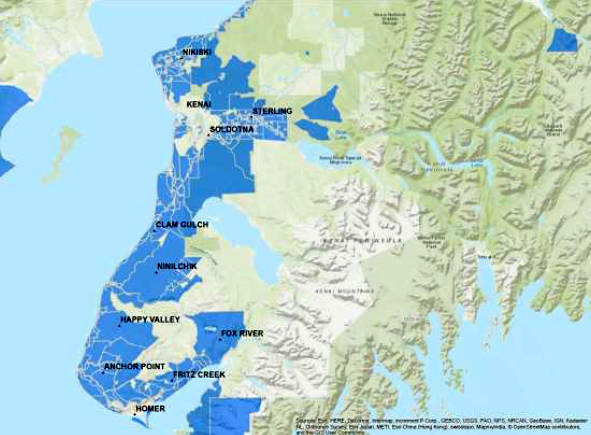Editor’s note: This story has been changed to correct Alaska Communications’ expected service date for wireless broadband and the date of their presentation to the Kenai Peninsula Borough Assembly.
Statewide telephone and internet service provider Alaska Communications plans to begin offering wireless broadband internet to some rural areas of the western Kenai Peninsula in late 2018, company representatives told the Kenai Peninsula Borough Assembly.
At the assembly’s June 19 meeting, Alaska Communications External Affairs Director Heather Cavanaugh and its District Operations Manager Stan Masneri described progress on the broadband project that the company began last fall. The two previously spoke to the assembly on the same subject in August 2017, shortly after beginning the project.
The new broadband wireless connections are funded with a grant that Alaska Communications received in November 2016 from the Federal Communications Commission’s Connect America fund for rural broadband. The grant gives the company approximately $19.7 million per year for 10 years to bring broadband internet (with speeds at least 10 megabits per second download and 1 megabit per second upload) to between 25,000 and 26,000 Alaska rural Alaskan locations.
On the Kenai Peninsula, Alaska Commications plans to accomplish this by building or leasing broadband towers in Ninilchik, Kasilof, Sterling, Funny River, and the Kalifornsky Beach area. These will connect homes and businesses within signal range to existing fiber optic line following the Kenai Spur Highway. Alaska Communications opened the first of these new connections in Ninilchik during a pilot project in fall 2017. Masneri told the Assembly that the new connections now have eight preliminary “beta customers” in Ninilchik who are getting speeds of up to 50 megabits per second.
As for Sterling, and Funny River, Alaska Communications has acquired or leased land for more towers that it plans to have “turned up and ready to go by the end of this year,” Masneri said.
Other connections are a bit further out.
“We’ll complete the project in 2025,” Masneri said. “It’s a three or four phase project and we’re moving into the second phase right now.”

